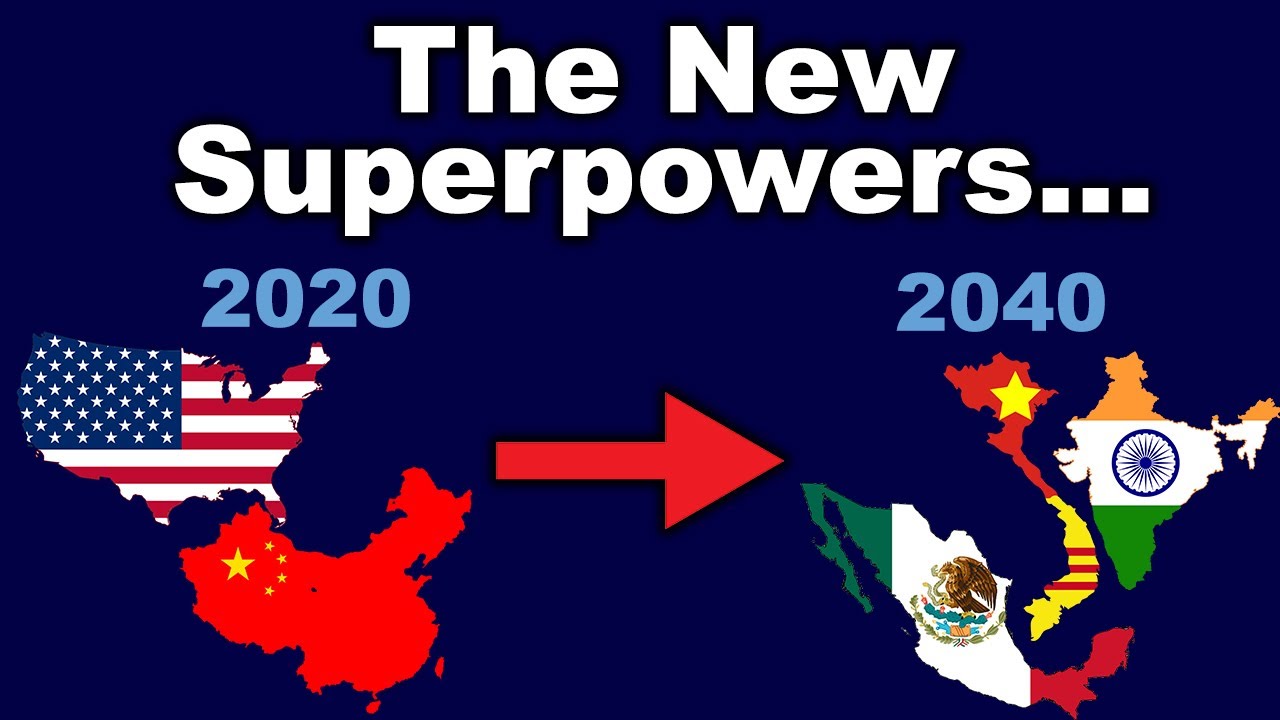There’s A Crisis That Is Quietly Creating New Economic Superpowers…

As China begins to reopen its factories and return back to work, what they are returning to will not be the same…
Despite China being the world’s economic darling for the last 40 years, the balance of the world’s economic power has begun to shift to some places that you might not expect.
In fact, we are already starting to see some signs of other nations around the world, rising up in order to take away some of China’s manufacturing prowess away from them.
And who knows, we might be witnessing the creation of the next generation of economic superpowers, right in front of our very eyes.
But the reason that this is happening is a little complex. it started a few decades ago in 1970’s China when the country began shifting its economic policy away from communism, and more towards capitalism.
They soon began building specific economic zones where massive ports and factories could be built that would maximize productivity and efficiency. And once these economic zones were opened up to foreign trade and investment, China’s economy began exploding.
In the 1980’s many fortune 500 companies began having their products manufactured in China because China could make their products with a similar quality, but for a substantially lower price than if they were manufactured in the west.
And this was because of the extremely low wages that Chinese workers made, combined with other factors like tax laws and import/export efficiencies.
So all of a sudden, if a competitor chose to manufacture their products outside of China, they simply could not compete on price, which would likely have made them go out of business.
And because of this, by the 2010’s, one third of all products on the planet were manufactured in China.
Within the span of 50 years, China has turned itself around from an impoverished nation of farmers, to a nation that has the second largest economy in the world, behind the United States.
But a few strange things began happening in the past few years.
Here’s a question…what happens when a country who builds its economy based upon low labor costs, all of a sudden becomes successful and wealthy?
In 1990, the average yearly wage from a Chinese worker was about $150 USD. By 2005, it was $2800 Dollars. In 2015, it was $8900. And as of this year, the average Chinese worker will make around $13 500 dollars.
That is a massive increase that has seen the average wage of a manufacturing worker increase by over 8500% over the last 30 years.
And what this means is that the cost of making products in China has become a lot more expensive than it used to be. Companies can’t make products for an 80% discount in China, like they used to. And because of this, we actually began to see a decline in Manufacturing in China in 2016, where for the first time in the countries modern history, their manufacturing output actually decreased by 2% during that year.
But that was just the first factor coming into play. after 2016, China once again saw modest increases in manufacturing output, until the United States imposed tariffs on imports from China. this caused a decrease in Chinese imports to the US by 7% in 2019, and forced many companies to begin looking for product sourcing in other countries.
And if that wasn’t enough, privacy concerns and tensions between China and the Western world have been on the rise ever since the country began taking over part of the worlds tech sector.
Ever since then, governments around the world have been actively trying to push Chinese technology out of their countries, while also incentivizing businesses to make their products domestically instead of China.
In fact, just last week, the departments of justice in the United States have requested that the FCC terminate China’s Telecom Authorization in the United States, citing it as a national security risk.
And all of these things, from rising labor costs, to geopolitical issues, have led us to today…and the pandemic.
You see, even though China-sourced manufacturing has been slowing down over the past decade, the country still remains the largest manufacturer in the world.
india economy. China economy. Vietnam economy. Mexico Economy. United States Economy.
What is the global semiconductor shortage crisis and how is it impacting the global economy?
There’s A Crisis That Is Quietly Creating New Economic Superpowers…
The world as we know it is constantly changing and evolving, and the current economic landscape is no exception. A crisis is quietly brewing that is not only reshaping the global economy but also creating new economic superpowers that are likely to challenge the status quo. The crisis in question is the global shortage of semiconductors, a key component in the production of electronics of all kinds, from smartphones to computers and cars.
The semiconductors crisis that began in early 2020 was initially seen as a minor blip in supply chains. However, as the pandemic continues to disrupt global trade and manufacturing, the crisis has deepened, with the industry now grappling with a severe shortage of semiconductors. While the shortage has hit several industries hard, it is the automotive sector that has been hit the hardest, with several car manufacturers around the world forced to idle production lines and cut back on output due to a lack of semiconductors.
With the world becoming more dependent on technology every day, the shortage of semiconductors has started to have a ripple effect across the global economy. It has exposed the fragility of global supply chains, with companies struggling to secure the chips they need to manufacture their products. This crisis is having a significant effect on some of the world’s largest economies, with the US, China, and Japan being among the worst affected.
However, the semiconductor shortage is also creating new economic superpowers. As the crisis deepens, smaller, nimble companies are starting to gain an edge over their larger counterparts. These companies are leveraging their agility and flexibility to seize opportunities that their larger peers are missing out on. With the supply of semiconductors being limited, these smaller companies are developing new, innovative ways to manufacture electronics that do not rely on conventional chip designs.
One of the most significant beneficiaries of the semiconductor crisis is Taiwan’s semiconductor manufacturing industry. Taiwan is home to several of the world’s leading semiconductor manufacturers, including Taiwan Semiconductor Manufacturing Company (TSMC), the world’s biggest contract chipmaker. TSMC, in particular, has been a beneficiary of the global semiconductor shortage, with demand for its chips soaring amidst widespread shortages.
Another emerging economic superpower that is benefiting from the semiconductor crisis is Singapore. Singapore is emerging as a critical hub for semiconductor manufacturing, with several major semiconductor companies setting up shop in the country. The city-state is leveraging its strategic location and advanced infrastructure to position itself as a leading player in the semiconductor industry.
The semiconductor crisis is not just a temporary blip in the global economy. It is shaping up to be a defining moment that will reshape the global economic landscape for years to come. As the crisis deepens, smaller, agile companies are emerging as new economic superpowers, challenging the dominance of established players. While the semiconductor shortage is having a significant effect on the global economy, it is also creating new opportunities for growth and innovation for those who are willing to adapt and change with the times.









Trump Impeachment Hearing With House Judiciary Committee | Live!!
President Trump proposes economic changes over coronavirus
Trump names Robert O’Brien as new national security adviser
British PM Johnson says it was still too risky to relax coronavirus lockdown yet
China locks down 2 cities to hinder spread of deadly virus